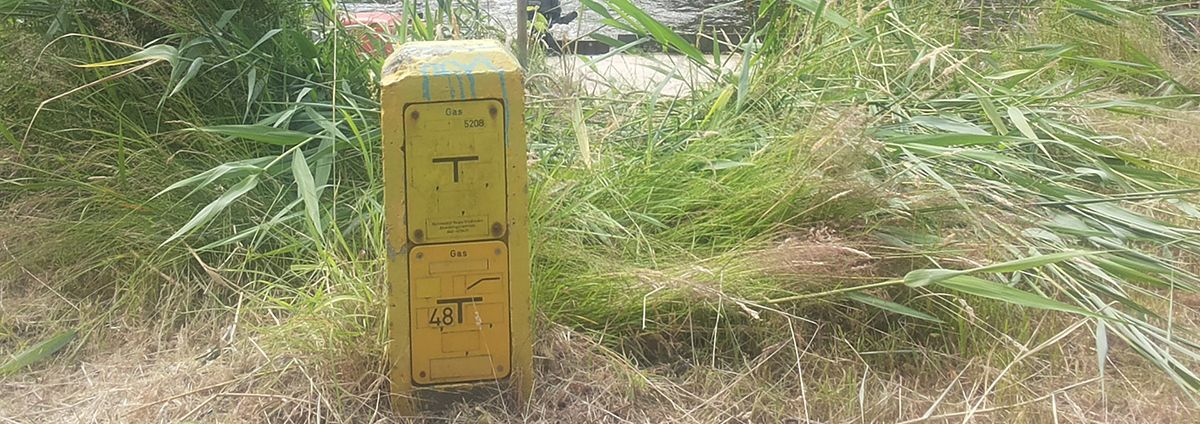Specialists in locating HDD pipes and underwater cables
TerraCarta has developed an unique system in order to locate and map pipes placed through horizontal directional drilling (HDD) as well as underwater cables. Not just the actual technical steps we take, but also communicating with utility owners, capturing evidence and an insurance that aligns with the risks involved have been developed throughout the years, to ensure that we can locate HDD pipes efficiently and systematically.
For example, during dredging activities or applying sheet piling, it is of the utmost importance to know the exact positions of HDD pipes and underwater cables.
If an HDD is planned, it is also important to map the utilities that cross the path of drilling. It would not be the first time damage to utilities caused by directional drilling resulted in an outage. Of course, this must be prevented. Throughout the years, TerraCarta has built up a lot of experience through locating and surveying HDD pipes. Our clients for these are the biggest utility owners and water construction contractors in the Netherlands.
ProRail, VolkerWessels, Hakkers, Beensgroep, Joulz, Ziggo, Stedin, Waternet and KPN.
We apply the best detection techniques while locating HDD pipes
The preparation of basically every HDD (Horizontal Directional Drilling) starts at the Dutch information center for utilities (KLIC). This is where we get the information about the positioning of underground utilities. In other countries, this is not always the case, so we are more dependent on our own detection results than in the Netherlands. When planning mechanical excavation, according to Dutch regulations it is mandatory to access this information. Besides this information, communication with the utility owner is very important. The owner knows exactly what goes through the pipe; 1 or 10 cables, colours, diameters,, and so forth. Sometimes multiple HDD pipes from different owners can be located close by and we have to be sure we have the right one for the project. In order to map an HDD pipe the bore head is located first, using several detection methods. These are, for example, EML, GPR and trench digging. Knowledge of the material of the pipe is important to determine the next step. If the pipe is made of metal, we can put an EML signal on it and follow it through that. TerraCarta then digitally captures the data and maps the HDD pipe. If the pipe is made of plastics, we either use GPR to locate and map the HDD pipe, or we make use of our unique conduit rod which we can put through the pipe to make use of our EML detection technique. If both of these techniques are insufficient, we apply a gyroscope for additional information.
Results from detection
Through these detection techniques we map the area where underground utilities are located. Then, based on the results of our detection work, we map the entire area of the drilling to ensure the client is fully prepared. Local factors can influence these results however, which can cause deviations. TerraCarta has a solution for this: in our mapping procedure we built in elements which can check the detection results. This is done by using existing maps, trench digging, utility probing and utilizing high pressure water jets for deeper probing.
TerraCarta has developed a system, in which we use high water pressure in order to ‘push’ steel pipes into the ground and probe the soil, in order to find the HDD pipes. With this, we can easily find HDD pipes that are very deep underground or underwater. More information about our other techniques can be found on other pages on our website.
Curious what TerraCarta can do for you?
Contact us, we would be happy to speak to you
Phone number: +31 528 – 234 406
E-mail: info@TerraCarta.nl
